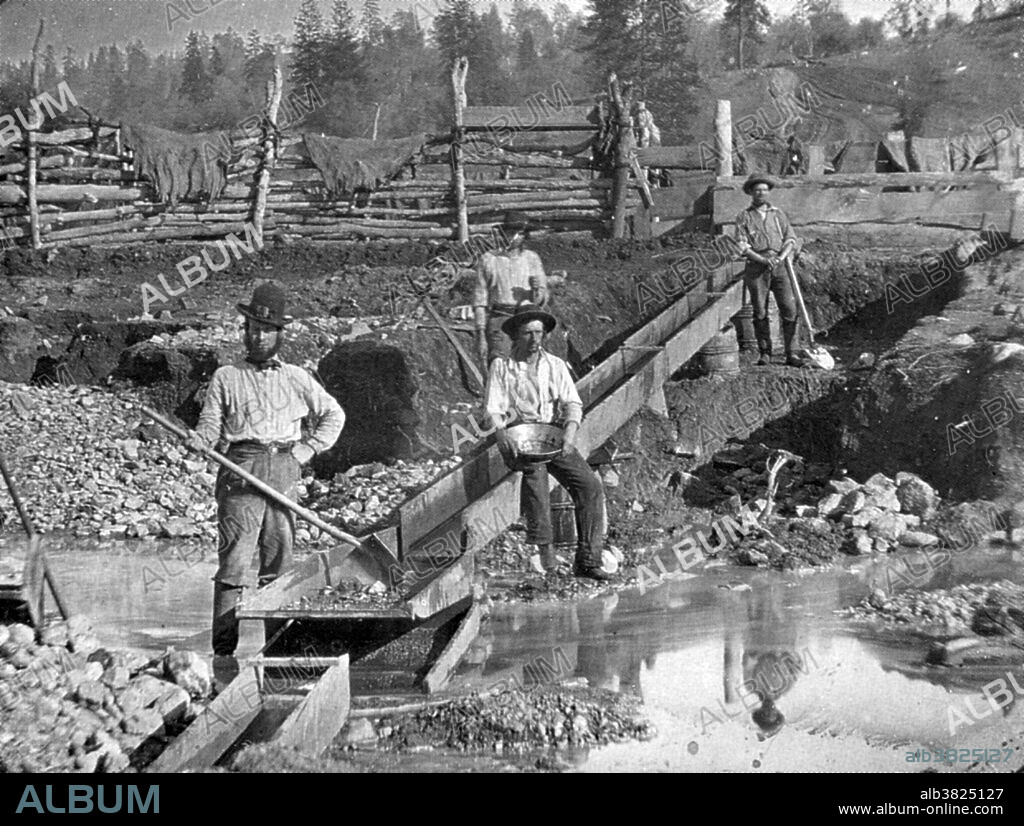alb3825127
California Gold Rush, 1850

|
Add to another lightbox |
|
Add to another lightbox |



Buy this image.
Select the use:

Title:
California Gold Rush, 1850
Caption:
Gold miners in unidentified location in California, 1850. The American River is a river system which runs from the crest of the Sierra Nevada mountain range to its confluence with the Sacramento River in California. The California Gold Rush (1848-55) began on January 24, 1848, when gold was found by James Marshall at Sutter's Mill in Coloma, California. The news of gold brought some 300,000 people to California from the rest of the US and abroad. Half arrived by sea and half came from the east overland on the California Trail and the Gila River trail. The gold-seekers, called "forty-niners", often faced substantial hardships on the trip. At first, the gold nuggets could be picked up off the ground. Later, gold was recovered from streams and riverbeds using simple techniques, such as panning. More sophisticated methods were developed and later adopted elsewhere. At its peak, technological advances reached a point where significant financing was required, increasing the proportion of gold companies to individual miners. Gold worth tens of billions of today's dollars was recovered, which led to great wealth for a few. However, many returned home with little more than what they had started with.
Category:
History: United States
Credit:
Album / Science Source / New York Public Library
Releases:
Image size:
4500 x 3399 px | 43.8 MB
Print size:
38.1 x 28.8 cm | 15.0 x 11.3 in (300 dpi)
Keywords:
1850 • 19TH CENTURY • 49ERS • AMERICA • AMERICAN • BW • CALIFORNIA GOLD RUSH • CELEBRITIES • CELEBRITY • EVENT • EVENTS • FAMOUS PEOPLE • FAMOUS • FORTY-NINERS • GOLD MINERS • GOLD MINING • GOLD PANNER • GOLD PANNING • GOLD PROSPECTOR • GOLD RUSH • GOLD-SEEKERS • GOLDPANNER • GOLDPANNING • GOLDRUSH • HISTORIC • HISTORICAL • HISTORY • HISTORY: UNITED STATES • IMPORTANT • MEN • MINER • MINERS • MINES • NOTABLE • PLACER MINING • PROSPECTORS • SLUICE BOX • STREAM BED • STREAMBED • UNITED STATES • US • USA • WELL-KNOWN
 Pinterest
Pinterest Twitter
Twitter Facebook
Facebook Copy link
Copy link Email
Email
